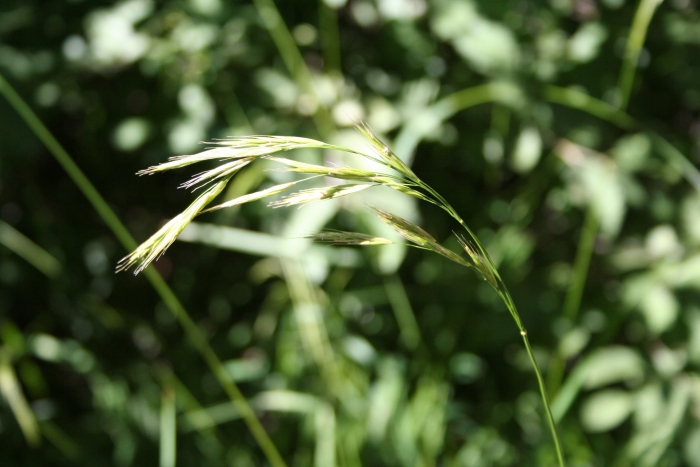Chinook Brome
(Bromus laevipes)
Chinook Brome (Bromus laevipes)
/
/

© runcator
CC BY 4.0
Image By:
© runcator
Recorded By:
Copyright:
CC BY 4.0
Copyright Notice:
Photo by: © runcator | License Type: CC BY 4.0 | License URL: http://creativecommons.org/licenses/by/4.0/ | Uploader: runcator | Publisher: iNaturalist |

























Estimated Native Range
Summary
Bromus laevipes, commonly known as Chinook brome, is a perennial grass that is native to a range of habitats including open woodlands, grasslands, and chaparral regions of western North America, from Washington to Baja California. It is a robust grass that can exceed 5 feet in height, with broad, flat leaf blades that are nearly 1 inch wide at the base. The inflorescence is an open array of spikelets, which are typically flattened and usually hairy, with the lower spikelets often drooping or nodding, adding a distinctive texture to the plant’s profile.
Chinook brome is appreciated for its adaptability to various soil types and its ability to thrive in both full sun and partial shade. It is often used in restoration projects and naturalized areas because of its ability to stabilize soil and provide habitat for wildlife. While it is not a high-maintenance grass, it does require moderate watering, especially in drier climates. It is not commonly used in formal garden settings but can be an excellent choice for meadow gardens and wildflower plantings.CC BY-SA 4.0
Chinook brome is appreciated for its adaptability to various soil types and its ability to thrive in both full sun and partial shade. It is often used in restoration projects and naturalized areas because of its ability to stabilize soil and provide habitat for wildlife. While it is not a high-maintenance grass, it does require moderate watering, especially in drier climates. It is not commonly used in formal garden settings but can be an excellent choice for meadow gardens and wildflower plantings.CC BY-SA 4.0
Plant Description
- Plant Type: Grass
- Height: 2-4 feet
- Width: 1-3 feet
- Growth Rate: Moderate
- Flower Color: N/A
- Flowering Season: Spring, Summer
- Leaf Retention: Deciduous
Growth Requirements
- Sun: Full Sun, Part Shade
- Water: Medium
- Drainage: Medium, Fast
Common Uses
Bee Garden, Deer Resistant, Erosion Control, Low Maintenance
Natural Habitat
Native to open woodlands, grasslands, and chaparral regions of western North America
Other Names
Common Names: Woodland Brome, Smooth Brome
Scientific Names: , Bromus laevipes, Bromopsis laevipes,
GBIF Accepted Name: